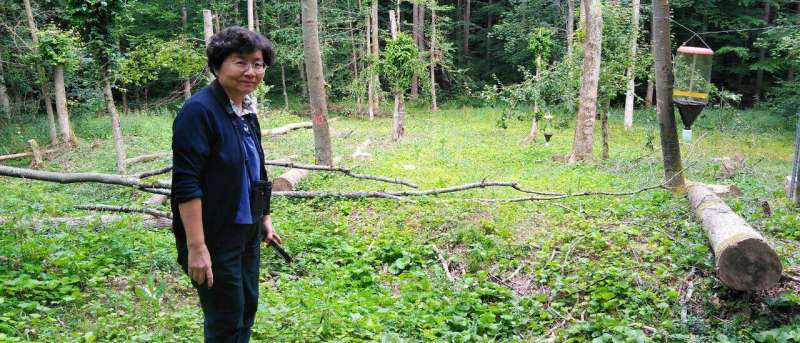This article has been reviewed according to Science X's editorial process and policies. Editors have highlighted the following attributes while ensuring the content's credibility:
fact-checked
peer-reviewed publication
trusted source
proofread
New method analyzes relationship between ecosystem biodiversity and multifunctionality of entire landscapes

A DFG research group led by the University of Würzburg has developed a method that makes it possible to analyze the relationship between biodiversity within and between ecosystems and the multifunctionality of entire landscapes.
Ecosystems fulfill a number of vital tasks: They store carbon, clean polluted water, pollinate plants and so on. How well an ecosystem can fulfill these tasks depends largely on its biodiversity, i.e., the variety of plants, animals and microorganisms that live in it. Until now, scientists have only been able to understand the exact nature of this relationship at a local level, for example in relation to individual forest areas, meadows and ponds.
The DFG (German Research Foundation) research group BETA-FOR, led by the University of Würzburg (JMU), has now succeeded in developing a statistical method that for the first time can also analyze the contributions of biodiversity between local ecosystems to the multifunctionality of entire landscapes. The findings are published in the journal Ecology Letters.
"This statistical tool was urgently needed," explains Prof. Jörg Müller, spokesperson of the research group and holder of the Chair of Animal Ecology with a focus on ecological field research in our latitudes at the Department of Zoology III. "Human use is increasingly leading to the homogenization of entire landscapes worldwide. This has consequences that are as far-reaching as they are unknown.
"With the help of our new method, we can analyze for the first time how the loss of heterogeneous landscapes affects not only biodiversity, but also their multifunctionality." Measures to promote biodiversity can also be evaluated in relation to the functions of the landscape—such as renaturalization projects, the establishment of protected areas or the promotion of sustainable agriculture."
From local ecosystems to entire landscapes
And this is how it works: The new statistical method relates the different biodiversity between individual ecosystems in a landscape to the overall multifunctionality. The term "multifunctionality" refers to the bundle of all functions that an ecosystem performs simultaneously. It breaks down the multifunctionality of a landscape into two components—the functions at the local level and those between different ecosystems in a landscape. This way, multifunctionality can be related to local biodiversity and to the biodiversity created by the diversity of habitats.
The new tool, a R Package called MF.beta4, was developed by the DFG research group BETA-FOR in cooperation with renowned statistician and mathematician Anne Chao from the National Tsing Hua University in Taiwan. With this development, the group has achieved one of its central scientific goals.
More information: Anne Chao et al, Hill–Chao numbers allow decomposing gamma multifunctionality into alpha and beta components, Ecology Letters (2023). DOI: 10.1111/ele.14336
Journal information: Ecology Letters
Provided by Julius-Maximilians-Universität Würzburg




















